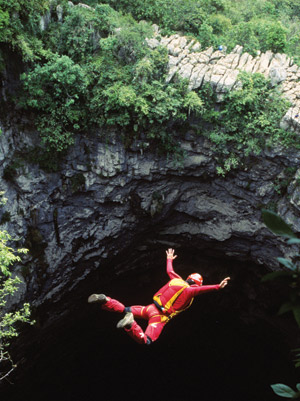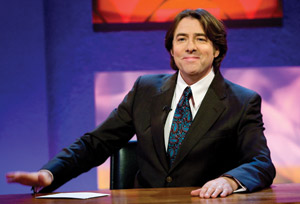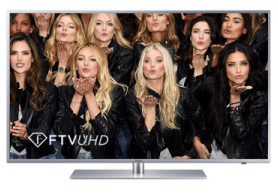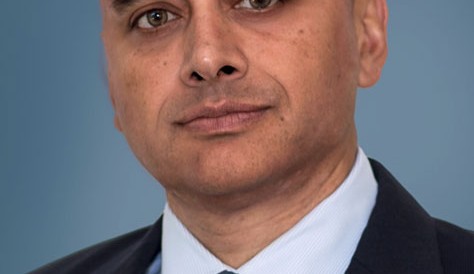
After more than 40 years of operation, DTVE is closing its doors and our website will no longer be updated daily. Thank you for all of your support.
The high road
While demand for HDTV is beginning to take off in key markets such as the UK, the economics remain challenging for many players. Graham Pomphrey and Stuart Thomson assess recent developments.
High-definition TV has always presented something of a challenge to international channel providers. All know they need to make the move to HD but want to do it in a way that ensures their services become financially profitable.
“HD in Europe is a key strategic initiative for many of Europe’s largest platforms. It remains a work in progress in many markets, but the last 12 months have seen some great success stories, like BSkyB, and some exciting launches like Sky Deutschland,” says Sean Cohan, senior vice-president, international, A&E Television Networks.
Number of strategies
Channel providers, including AETN, that have already taken the plunge have adopted a number of strategies. The European arm of National Geographic, for example, has been producing in full HD since early 2004. According to George Jeffrey, president, National Geographic Channels Europe, this enabled it to be up and running “very quickly when the first full HD services around Europe started to launch a couple of years later.” The broadcaster launched its first European HD service in 2006 in the UK as part of BSkyB’s opening HD line up. It has since launched in various markets including Italy, France, Benelux, Scandinavia, Poland, Portugal and recently in Germany. “The ever increasing hunger from cable and satellite pay-TV retailers is great news for us because HD is both an obvious and critical part of our business,” says Jeffrey. “We are committed to providing our audience with the greatest quality viewing experience possible and the best way to showcase our breathtaking imagery is with the incredible colour, sound and vibrancy which HD gives.” Equally as significant as the launches of Nat Geo HD in Europe was the debut of Nat Geo Wild HD in the UK earlier this year, according to Jeffrey. “As we develop our sub-brand portfolio, HD growth provides us with a vital artery to expand and extend our visibility and profile,” he says. “Wild is a channel made for HD, and which brings the genre vividly to life. It’s been met with a rapturous reception, and deservedly so. It’s ultimately what HD is all about and perfectly complements our core HD offering. We have very aggressive goals in this space – we want to launch as many HD versions of our core channel, and of Nat Geo Wild, in as many markets as possible and as quickly as possible.”
Another factual channel making strong progress in HD is Discovery – one of the pioneers and early leaders in HD in Europe. It currently offers HD services in 44 markets, and the broadcaster launched an HD version of the Animal Planet service in Scandinavia earlier this year. The main Discovery Channel’s HD footprint meanwhile stretches across Europe, including distribution in Russia, Romania, Latvia and Italy.
“HD has always been an integral part of our long-term vision to provide and continually enhance our users’ experience.”
Bhavneet Singh, MTVNI
MTVNHD, MTVNI’s Warsaw-based HD service, launched in September last year in six countries and is now available in 21, with plans to extend this to a further eight by the end of the year.
“HD has always been an integral part of our long-term vision to provide and continually enhance our users’ experience,” says Bhavneet Singh, managing director and executive vice-president, emerging markets, MTV Networks International (MTVNI). For us, MTVNHD is a strategic investment for the company and one of our key priorities is to build significant scale and depth by continuing to grow distribution in countries where the service exists and obviously launching into new markets.” Singh believes there is still room for HD to grow, particularly in Europe. “Despite the economic downturn and its effect on the broadcast industry, I think that with the digital switchover, viewers are becoming increasingly acquainted with HD and the number of people using HD hardware is growing as the technology becomes more popular and more accessible,” he adds.
Eurosport has also taken the plunge, launching an HD version of the main channel last year and has begun rolling out Eurosport 2, its second, more regionally-focused channel, in HD in 20 countries this year.
For Jean-Thierry Augustin, managing director, distribution and development, Eurosport, the key to succeeding in a crowded market is to develop strong channel brands with a loyal following, and to back this up with added value services. “International channel providers must be able to propose value-added services such as catch-up TV, latest innovations like HD, and quite soon 3DTV on which we are currently exploring technical solutions. The first tests show that it is an amazing viewing experience.”
According to Augustin, the broadcaster is satisfied with the progress of its HD launches. “We went to market at the optimal time,” he says, pointing out that today Eurosport HD is in almost three million homes after only 15 months. Following the launch in early August of Eurosport 2 in HD, the channel is already available in Poland on Cyfra Poland and ‘n’, two leading DTH platforms.
 “We believe that the HD offer is good for both for viewers and for operators,” says Augustin. “For viewers, HD offers them real added value to their sports viewing experience: crystal clear images with amazing precision and great sound. Once you watch sport in high definition, you can’t go back to SD. For operators, HD proves to be an effective business model by proposing an offer that increases customer loyalty and value.”
“We believe that the HD offer is good for both for viewers and for operators,” says Augustin. “For viewers, HD offers them real added value to their sports viewing experience: crystal clear images with amazing precision and great sound. Once you watch sport in high definition, you can’t go back to SD. For operators, HD proves to be an effective business model by proposing an offer that increases customer loyalty and value.”
Within each individual market, international channels can only do so much to drive uptake of the technology. Take-up of HD requires the availability of channels that viewers most want to watch – the national public and commercial channels. In the UK, the BBC has been at the forefront of HD development amongst the big five national broadcasters. Now the pubic broadcaster’s commercial arm, BBC Worldwide, has launched the BBC’s HD channel internationally for the first time in Scandinavia. “The development has been quite phenomenal. It’s really driven the customer perception of value from DTH platforms. When you see some of the growth of DTH platforms around Europe, I think much of that can be attributed to the additional value of HD,” says Dean Possenniskie, general manager and senior vice-president EMEA, BBC Worldwide. “The number of channels really has exploded and you have to have a high quality HD channel within your portfolio. We appreciated early on that offering a high quality HD channel is critical and now we’re focused on introducing BBC HD into new markets across Europe. We’ve had a successful launch in Scandinavia, we understand the value of the channel there, so we’re now looking at further distribution, both in western Europe and in the emerging markets.”
The importance of HD to the continued growth of pay-TV is also emphasised by Possenniskie. “It’s been a good year to be in pay-TV,” says Possenniskie. “From our point of view we feel that launching onto pay platforms is the right move and that’s the strategy we’re sticking with at this stage.” He points to the UK, where BSkyB and Virgin Media are holding up well. “The reason pay-TV is holding up well is some of the value-added services that are now key,” he says. “An example on DTH and satellite is HD. Viewers in all of the markets we’re dealing in are really taking to HD. On the cable side, the expansion of VOD offerings has become really important. It’s critical now for cable operators to have a very strong VOD offering to help differentiate, not only against DTH and satellite, but against the free TV offerings.”
Yet to launch
While the HD market in Europe seems to be approaching critical mass, a number of channel providers have yet to launch.
Pan-European thematic channel provider Chello Zone is looking closely at HD.
“HD services have been growing more quickly over the past year or so across EMEA. Prior to that growth was much slower than anticipated and there were relatively few HD channels to choose from,” observes Louise Cottrell, Chello Zone. However, she says, platforms across the world are now actively launching HD services, channels are making  content available and subscribers are also more informed as to what HD actually means and how and where it can enhance their television experience. The high-definition message is therefore beginning to filter down from purveyors of premium sport and movie channels to a much wider range of thematic channel providers. “Viewers have different degrees of appetite for HD across genres and not all content is necessarily deemed a natural fit with the technology yet – but again the core content areas of movies and sports have led the way in HD roll-out, closely followed by documentary content and these days entertainment channels are also moving forward with HD plans; and as the market develops other genres will also follow suit,” says Cottrell. “Most major brands have at least some HD content available these days and most channels are planning an HD strategy as part of their near to medium term future.”
content available and subscribers are also more informed as to what HD actually means and how and where it can enhance their television experience. The high-definition message is therefore beginning to filter down from purveyors of premium sport and movie channels to a much wider range of thematic channel providers. “Viewers have different degrees of appetite for HD across genres and not all content is necessarily deemed a natural fit with the technology yet – but again the core content areas of movies and sports have led the way in HD roll-out, closely followed by documentary content and these days entertainment channels are also moving forward with HD plans; and as the market develops other genres will also follow suit,” says Cottrell. “Most major brands have at least some HD content available these days and most channels are planning an HD strategy as part of their near to medium term future.”
Niall Curran, chief operating officer of Chello Zone’s parent company Chellomedia, says that the company has plans to move forwards with HD – even in the emerging markets of central and eastern Europe. “HD is definitely an opportunity for us, although so far our activities have been restricted,” he says. While the company has HD sports and movie services available in the Netherlands, it has yet to do much elsewhere. “I would expect us to do something in the coming year around central and eastern Europe,” says Curran. “We are in discussion with operators. What we have done over the past year or 18 months is put in place the technical infrastructure to do HD more broadly around the business, so as markets develop it will be an easy evolution for us.” Among Chellomedia’s portfolio of thematic channels, Curran identifies Hungary-based documentary channel Spektrum as a strong prospect for HD, along with Iberian doc channel Odisea.
HBO Central Europe, like Chello Zone a company with a strong presence in central and eastern Europe, is cautious about progress in the region. “There have been a number of HD channel launches in the last 12 months. I think central Europe is still behind in HD box roll out, and the question now is about the number of HD homes catching up to more advanced markets. HD is a significant qualitative shift for TV, so certainly it will come,” says Linda Jensen, CEO, HBO Central Europe.
Other channel providers working in areas that have not been amongst the first to take the leap, such as international news, are also cautious. “It is true that in recent months there has been an acceleration of launch services and HD channels, and France 24 looks closely at these different services in Europe and throughout the world,” says Philippe Rouxel, vice-president, worldwide distribution. “It therefore seems logical and natural that we also take a position on this emerging market. This will happen in the coming months.”
Al Jazeera, meanwhile, has already launched an HD version of its regionally-focused sports channel but has yet to take a firm decision about news. “Al Jazeera Sport HD has been our only HD launch to date and, after successful HD broadcasts from Euro2008 and the Beijing Olympics last year, we are now ramping up our live soccer output in HD, with the Champions League as the centre-piece,” says Phil Lawrie, commercial director, Al Jazeera. “Al Jazeera English is recorded in HD but, to be honest, we still haven’t seen a critical need to go the final mile and invest in deploying [the channel] in an HD format as of yet. This could change in 2010 but we’ll weigh it carefully given the cost of backhaul capacity for an HD channel.”
“Growth in HD has been driven by a ‘virtuous circle’ – as technology improves, more HD content is produced, and so on until there is a greater demand for HD content.”
Greg Ricca, Discovery Networks International
BSkyB-owned news channel Sky News plans to launch an HD channel next year, initially available only the UK. “We’ll launch Sky News HD in the spring of next year – it’s going to be one of our key strategic focuses along with strengthening online journalism,” says Steve Bennedik, head of technology at Sky News. The broadcaster decided to create an HD version of the news channel after launching a high-definition version of its Sky Arts channel. “It’s a very exciting prospect and would enhance the family of Sky HD channels,” says Bennedik. Sky is currently talking to equipment suppliers and analysing necessary changes to production workflow. The channel will initially operate in HD from its Millbank facility in London and its Washington DC newsroom, followed by other bureaux at a later stage. “We are confident we can provide a high percentage of our output in HD,” says Bennedik. While Sky’s cameras are HD-capable, work has to be done to ensure that material can be transported back to the studio, while third-party agency material will need to be upconverted (this will be a temporary measure – AP news is due to migrate to HD in 2012).
Content
Without an existing market to justify production costs, the lack of availability of sufficient content was clearly one of the issues that held back the deployment of HD services initially. Broadcasters have been reluctant to invest too heavily, which in turn means that there is little to attract new subscribers. However, this has changed considerably – at least in certain key genres.
“Growth in HD has been driven by a ‘virtuous circle’ – as technology improves, more HD content is produced, and so on until ultimately, there is a greater demand for HD content,” says Greg Ricca, president and CEO, Discovery Networks International. “Europe is in the throws of industry adoption for HD programming, channels and technology.”
Both the availability of sufficient fresh content on the channels that exist and the availability of sufficient channels to present a compelling proposition to consumers are important. MTV is addressing both. “We are also working on expanding MTVNHD’s content library, to offer our viewers more true HD content,” says Singh. “Further down the line, and where it makes business sense, we will look at the existing portfolio of MTVNI’s SD channels to see if there is potential to launch our non-music portfolio of channels in high definition in markets that have a high demand for HD and good take up of the technology.”
For Singh, MTV’s viewers, as well as cable operators that carry MTVNHD, are primarily interested in live concerts and other music content by top music artists. “We are working hard to meet their demands. As with other HD services, the most valuable content on MTVNHD is so-called ‘native HD’ programming in 5.1. Surround Sound,” says Singh. “Programming that features international stars performing at locally-recorded concerts is also well received by local cable operators and viewers such as The Hives Live in Buenos Aires or Rock Am Ring, one of the biggest summer festivals with an international line up held in Germany, to name a few.”
Additionally, says Singh, there is high demand for music videos in high definition among the channel’s viewers. “However, since there are very few videos shot in native HD, we trust that record companies will be interested in eventually producing more videos to meet the requirements. To meet the demands, we purchase as many concerts as possible, and use select songs from the shows as separate music videos,” says Singh. “This allows us to provide the viewers with as diversified an offering as possible. Moving forwards, we certainly hope that the increase in the amount of the music videos in HD will help us to diversify the existing offering even more.”
 Development of HD also requires significant investment in infrastructure by the channels. “Last year we undertook a major investment to implement significant technological changes in both the production and the distribution processes,” says Eurosport’s Augustin. Eurosport recently created a new master control room compliant with HD-standards so that it can offer viewers programmes in HD 1080i resolution and with enhanced audio quality, compared to Eurosport 2 SD. “As we all know from experience sport is ideally suited to HDTV and a strong sport offer in HD is added value for viewers and operators. For instance, fast moving sports like tennis have reinforced their interest in HD, with a better viewing of the ball and even the trajectory of the ball,” says Augustin.
Development of HD also requires significant investment in infrastructure by the channels. “Last year we undertook a major investment to implement significant technological changes in both the production and the distribution processes,” says Eurosport’s Augustin. Eurosport recently created a new master control room compliant with HD-standards so that it can offer viewers programmes in HD 1080i resolution and with enhanced audio quality, compared to Eurosport 2 SD. “As we all know from experience sport is ideally suited to HDTV and a strong sport offer in HD is added value for viewers and operators. For instance, fast moving sports like tennis have reinforced their interest in HD, with a better viewing of the ball and even the trajectory of the ball,” says Augustin.
Being tied in with a national broadcaster with significant resources gives channel providers such as BBC Worldwide a significant advantage. “By 2012 at least 70% of all BBC productions will be made in HD, so obviously we’ve got a very good selection and flow of HD programming coming through. That gives us real confidence in growing the content and the depth of our HD channels. We also offer a unique HD channel in that we have a broad range of genres within the channel. Within it we’re seeing big natural history productions, like Planet Earth and Blue Planet – they are the productions that viewers love. In addition, we’re seeing some of the live performances on our channel, Live at Abbey Road, Jools Holland, the Proms proving very successful,” says Possenniskie.
The lack of content in the initial phase of rollout has reflected the high-production cost of HD content. However, the premium for producing in HD has continued to fall as more content providers get involved.
Cost of programming
[icitspot id=”10005″ template=”box-story”]
“We have seen the costs for HD productions significantly decrease over the years as there has been a mass adoption by the industry to produce most of their content exclusively in high-definition, as well as launch more exclusive HD channels,” says Ricca. “Some of the most popular and compelling forms of HD programming include factual content that spans world culture, travel, lifestyle, engineering, science, history and wildlife. Planet Earth [co-produced by Discovery and BBC] is a prime example of how HD has transformed the viewing experience for consumers.”
When National Geographic Channel started acquiring HD programming, both the channel and its production companies went through a steep learning curve, according to Tim Joyce, vice-president of operations. “Equipment was expensive, the costs for production and post production increased by 40% overnight and our platforms were still hammering out the details of exactly how they needed air masters to be formatted. This happens with any new technology; at first there were a lot of growing pains,” he says. In 2004, he adds, HD was mainly being used for sports, feature films and TV dramas (genres that tend to have much bigger budgets than documentary production), which meant that when National Geographic made the decision to acquire solely in HD, it ran into supply versus demand problems. “We were requiring a supply of HD productions from our production companies, but they had little-to-no demand with other outlets,” he says. “So, initially they wanted us to purchase the HD cameras because none of their other channels were requiring it.” However, it’s a very different story today: “All our production partners work exclusively in HD; equipment is not only cheaper but much better in the quality of the images it can capture. Increased demand for HD has led to a new generation of cameras that far exceed the ones we were using 5 years ago. All these developments validate our decision to take the plunge into HD production. We’re looking forward to what HD will bring in the future and I am sure that for productions five years from now, although they might not be any cheaper, the quality and the types of images will be leagues better.”
 MTVNE’s Singh is also optimistic that the overall trend of costs is downwards. “In Europe, HD is still a fairly niche offering, and therefore also a more expensive one,” he says. “The materials and broadcast technologies – in comparison with SD channels – are several times higher for HD. However, we hope that the demand for HD will grow dynamically and that content will therefore become more accessible. Producers have already noticed the potential of HD content and we’ve seen an increase in the amount of content being produced in HD resulting in a far more competitive landscape for producers and broadcasters alike.”
MTVNE’s Singh is also optimistic that the overall trend of costs is downwards. “In Europe, HD is still a fairly niche offering, and therefore also a more expensive one,” he says. “The materials and broadcast technologies – in comparison with SD channels – are several times higher for HD. However, we hope that the demand for HD will grow dynamically and that content will therefore become more accessible. Producers have already noticed the potential of HD content and we’ve seen an increase in the amount of content being produced in HD resulting in a far more competitive landscape for producers and broadcasters alike.”
The degree to which costs have fallen should not be exaggerated, however, and viewer expectations and competition between providers mean that the goal is always shifting. “While some of the basic costs of HD production have remained flat or fallen somewhat, our production standards and expectations for dramatic visual effects continue to rise which brings upward cost pressure. From the start, factual and sport HD content have piqued consistent viewer interest,” says Cohan.
More important from an international channel provider’s point of view than the cost of content production is content distribution.
“The cost of HD programming is still expensive in terms of bandwith and programme production – but is a natural development for leading channels,” says Augustin.
Bandwidth costs figure high in BSkyB’s calculations too. While the standard-definition version of Sky News is sold overseas to a number of operators, the HD version will only be distributed in the UK for the foreseeable future – a fact that reflects the high cost of HD distribution. “There are challenges in terms of the economics that come along with that – you need significant carriage for the channel [to make it worthwhile],” says Liz Higgins, head of commercial strategy at Sky.
The economics of international distribution will remain challenging for many channels, although technologies such as DVB-S2 and advances in H.264 compression, as well as the availability of more satellite capacity, could ease the problem. But what really needs to happen is for demand for HD services to take off significantly across international markets.


